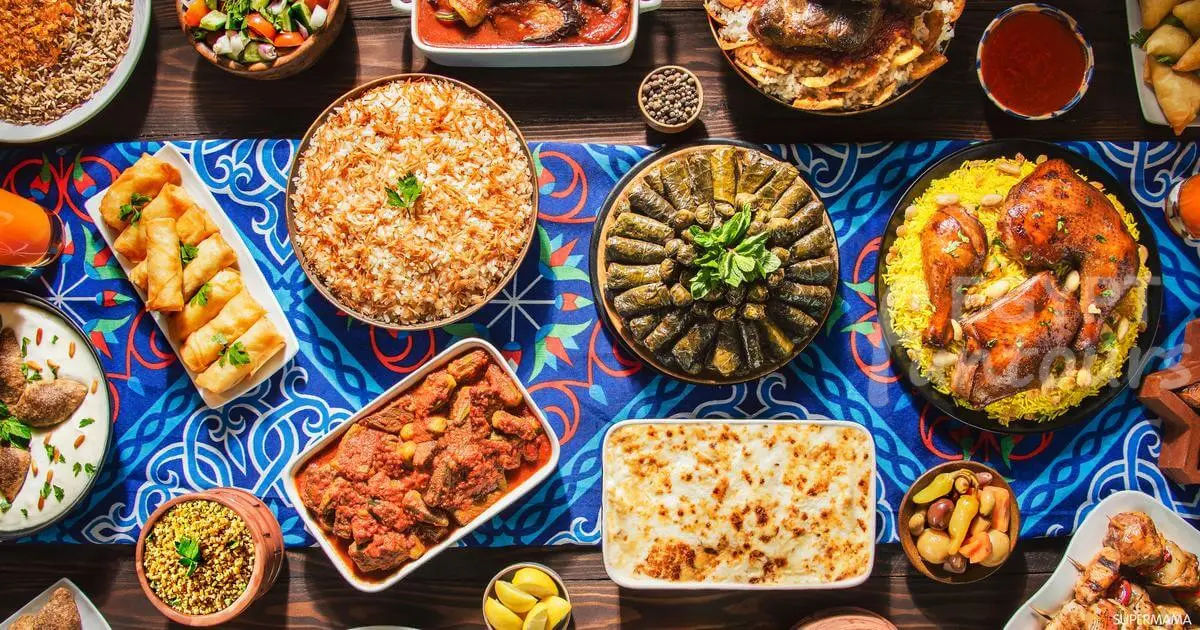
Things worth trying in Egypt - Food Tour Through Traditional Foods and Local Experiences
A Culinary Journey Through Traditional Foods and Local Experiences.
A Culinary Journey Through Traditional Foods and Local Experiences
Egypt offers more than just ancient monuments and desert landscapes. Its culinary scene is a vibrant reflection of the country’s rich history and diverse culture. Egyptian cuisine combines Mediterranean, Middle Eastern, and African influences, making it a paradise for food lovers. Whether you’re strolling through Cairo’s bustling streets or exploring the historic sites, the flavors of Egypt will captivate you. Here’s a guide to the must-try foods, drinks, and local experiences that will enhance your culinary journey in Egypt.
Things to Do in Cairo: A Taste of Egyptian Culture
Cairo is the perfect place to start your culinary adventure in Egypt. Known for its iconic landmarks, like the Pyramids of Giza and the Egyptian Museum, Cairo is also a food lover’s paradise. The city’s food scene is a mix of traditional eateries, modern cafes, and street food stalls, each offering something unique. Exploring Cairo’s food culture is essential for anyone wanting to experience the full essence of Egyptian cuisine.
In Cairo, you’ll find local markets, like Khan El Khalili, where you can sample street food, fresh juices, and traditional sweets. A food tour through Cairo will not only introduce you to popular dishes but also provide insights into the city’s history and culture through its food.
Egypt’s National Food: Kushari
A visit to Egypt would be incomplete without trying Kushari, the country’s national dish. Kushari is a hearty, flavorful meal made from rice, lentils, pasta, and chickpeas, topped with a tangy tomato sauce and crispy fried onions. The combination of ingredients might seem simple, but the dish is a perfect balance of textures and flavors—savory, tangy, and satisfying. Kushari is popular for lunch or dinner and reflects Egypt’s multicultural influences, with elements borrowed from Italian, Indian, and Middle Eastern cuisines.
Where to Try Kushari:
- Kushari Abou Tarek (Cairo): This restaurant is famous for serving one of the best versions of Kushari in Cairo, drawing both locals and tourists.
- Kushari El Tahrir (Cairo): Known for its generous portions and quick service, this spot near Tahrir Square is a great place to grab a filling meal after exploring the city.
Traditional Egyptian Cuisine: Rich, Flavorful, and Hearty
Egyptian cuisine is deeply rooted in the country’s history and culture. Its simplicity and reliance on fresh, local ingredients make Egyptian dishes both flavorful and nutritious. A few traditional favorites include Ful Medames, Molokhia, and Fattah.
Ful Medames, made from fava beans simmered with garlic, lemon, and olive oil, is one of the oldest and most beloved Egyptian dishes. It’s typically eaten for breakfast, served with warm pita bread and various toppings like eggs, vegetables, and olives.
A meal called molokhia is prepared by cooking finely chopped jute leaves in a flavourful broth with garlic and coriander. Usually, it is served with rice and either rabbit or chicken. A must-try for any traveler to Egypt, the meal has a distinct texture and earthy flavour.
Fattah is a festive dish consisting of layers of rice, crispy bread, and meat (typically lamb) marinated in garlic-vinegar sauce. It's usually offered on holidays and special events
These dishes provide a rich and varied taste of Egypt, blending savory flavors with a touch of spice.
Egyptian Street Food: Quick, Tasty, and Authentic
One of the best ways to experience Egyptian food is through its vibrant street food culture. From savory snacks to refreshing drinks, street vendors in Cairo offer a variety of delicious options.
One popular street food is Falafel, locally known as Ta’ameya. Made from mashed fava beans mixed with herbs and spices, these deep-fried patties are served in pita bread with tahini, salad, and pickles. Another favorite is Shawarma, spiced, roasted meat (usually lamb or chicken) served in flatbread with fresh vegetables, pickles, and sauces.
Where to Experience Street Food:
- Khan El Khalili Bazaar (Cairo): A bustling market filled with food vendors offering everything from falafel to freshly squeezed juices.
- Tahrir Square (Cairo): A popular area with street food stalls selling shawarma, koshari, and other local snacks.
Cairo Food Tour: Explore Local Flavors
If you want to dive deeper into Egypt’s culinary culture, consider taking a Cairo food tour. These tours take you through neighborhoods, allowing you to sample local dishes, both savory and sweet, while learning about their cultural significance. It’s a great way to explore the city’s diverse food scene, from street snacks to home-cooked meals.
Recommended Cairo Food Tours:
- Cairo Street Food Tour: Explore the vibrant streets of Cairo and taste popular dishes like falafel, koshari, and shawarma while learning about the history behind each dish.
- Traditional Egyptian Cooking Class: Join a class to learn how to make classic Egyptian dishes like Molokhia and Fattah, and gain insight into Egyptian cooking techniques.
Sweet Indulgence: Egyptian Pastries and Desserts
Egypt’s pastry scene is a delightful mix of Eastern and Western influences. Baklava, made from layers of filo dough, honey, and chopped nuts, is one of the most famous desserts in Egypt. Basbousa, a semolina cake soaked in syrup, is another popular treat, often served at celebrations.
Kunafa, made from shredded filo dough filled with sweet cheese or nuts and drenched in syrup, is a beloved dessert during Ramadan and other holidays. These sweet treats are typically enjoyed with a cup of tea or coffee.
Where to Find Pastries:
- Patisserie Kahn El Khalili (Cairo): Located in the heart of the famous market, this patisserie offers a range of traditional Egyptian pastries and Western-style desserts.
- La Poire (Cairo): A well-known pastry chain offering beautifully crafted desserts and pastries at several locations across Cairo.
Traditional Egyptian Drinks: Refreshing and Nourishing
No meal in Egypt is complete without trying some of the country’s traditional drinks. Karkadeh, made from dried hibiscus flowers, is a popular drink that can be served either hot or cold. It’s tangy, sweet, and packed with health benefits.
Another traditional drink is Sahlab, a creamy beverage made from orchid tubers and often garnished with nuts, cinnamon, and coconut. Sahlab is especially popular in the cooler months and provides a comforting, warming experience.
Where to Enjoy Traditional Drinks:
- Café Riche (Cairo): A historic café where you can sip on Karkadeh while enjoying the old-world charm of the surroundings.
- El Fishawy (Cairo): One of Cairo’s oldest cafés, located in Khan El Khalili, known for its Sahlab and traditional Egyptian coffee.
Food Markets: A Culinary Adventure
Egypt’s food markets are the best places to experience the country’s food culture. From fresh produce to spices and street food, markets like Khan El Khalili and Souq El Gomaa offer a glimpse into the daily life of Egyptians. These markets are also great places to buy ingredients to recreate Egyptian dishes at home.
Where to Explore Food Markets:
- Khan El Khalili Bazaar (Cairo): A famous market where you can explore local spices, fresh produce, and street food.
- Souq El Gomaa (Cairo): A more local market, offering fresh ingredients used in traditional Egyptian cooking.
Conclusion: A Flavorful Experience in Egypt
Egyptian cuisine is a delightful blend of ancient traditions and modern influences, offering a rich variety of flavors and textures. From the iconic Kushari to the sweet indulgence of Baklava, Egypt’s food culture provides an exciting and unforgettable experience. Whether you’re wandering through the vibrant markets, enjoying a meal at a traditional restaurant, or sipping on Karkadeh at a historic café, Egyptian food offers an immersive way to explore the country’s history and culture. With every meal, you’re not just tasting food; you’re experiencing Egypt’s past and present, one bite at a time.
Related Articles

Planning a Trip to Egypt
Embarking on a journey to Egypt is like stepping into a time machine that transports you to the cradle of civilization, where ancient pyramids and majestic Nile landscapes await. Planning a trip to Egypt offers not just a vacation, but an adventure into history, culture, and wonders that have fascinated humanity for millennia.

Start your adventure in Egypt
As the cradle of one of the world's oldest civilizations, Egypt continues to captivate the hearts and minds of travelers from across the globe. From the iconic pyramids of Giza to the serene waters of the Nile, and the bustling bazaars of Cairo, Egypt offers a wealth of history, culture, and adventure for intrepid explorers. Let's embark on a magical journey through this captivating land and uncover the treasures that await those who venture to Egypt.

Uncover the Ancient Egypt Treasures
Where the Past Comes to Life. Egypt is frequently regarded as the birthplace of civilization because of its majesty and mystique. With fascinating stories of pharaohs, colossal structures, and unimaginable wealth, it has a rich history spanning thousands of years. The wonders of ancient Egypt that have enthralled tourists for centuries will be revealed on this voyage for those who wish to visit the top archaeological sites in Egypt.